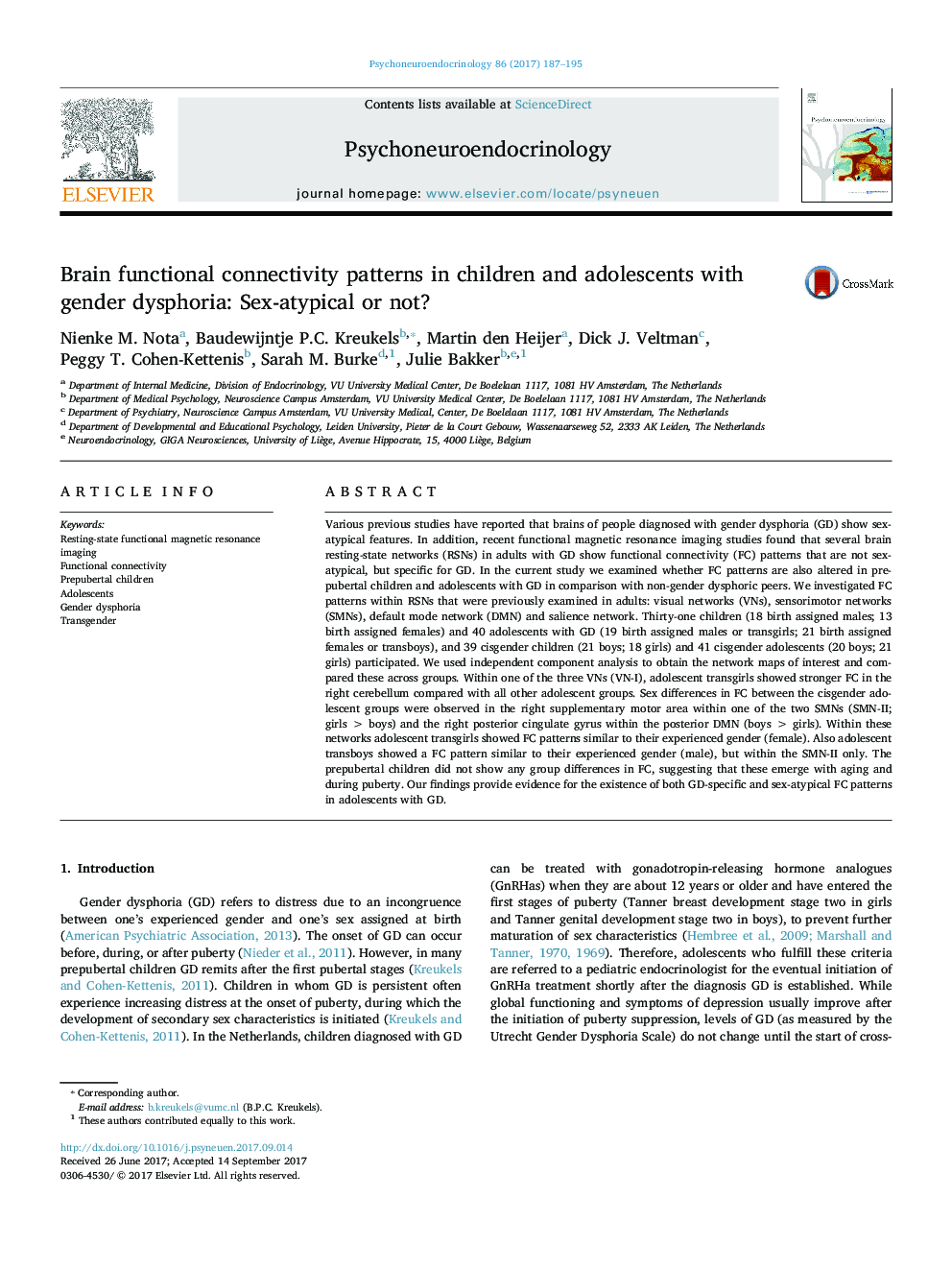| کد مقاله | کد نشریه | سال انتشار | مقاله انگلیسی | نسخه تمام متن |
|---|---|---|---|---|
| 4934347 | 1433957 | 2017 | 9 صفحه PDF | دانلود رایگان |
- Cisgender adolescents show sex differences in brain functional connectivity patterns in sensorimotor and default mode networks.
- Transgender adolescents show different connectivity patterns in visual, sensorimotor, and default mode networks.
- No sex- or group differences in brain functional connectivity were observed in prepubertal trans- and cisgender children.
Various previous studies have reported that brains of people diagnosed with gender dysphoria (GD) show sex-atypical features. In addition, recent functional magnetic resonance imaging studies found that several brain resting-state networks (RSNs) in adults with GD show functional connectivity (FC) patterns that are not sex-atypical, but specific for GD. In the current study we examined whether FC patterns are also altered in prepubertal children and adolescents with GD in comparison with non-gender dysphoric peers. We investigated FC patterns within RSNs that were previously examined in adults: visual networks (VNs), sensorimotor networks (SMNs), default mode network (DMN) and salience network. Thirty-one children (18 birth assigned males; 13 birth assigned females) and 40 adolescents with GD (19 birth assigned males or transgirls; 21 birth assigned females or transboys), and 39 cisgender children (21 boys; 18 girls) and 41 cisgender adolescents (20 boys; 21 girls) participated. We used independent component analysis to obtain the network maps of interest and compared these across groups. Within one of the three VNs (VN-I), adolescent transgirls showed stronger FC in the right cerebellum compared with all other adolescent groups. Sex differences in FC between the cisgender adolescent groups were observed in the right supplementary motor area within one of the two SMNs (SMN-II; girls > boys) and the right posterior cingulate gyrus within the posterior DMN (boys > girls). Within these networks adolescent transgirls showed FC patterns similar to their experienced gender (female). Also adolescent transboys showed a FC pattern similar to their experienced gender (male), but within the SMN-II only. The prepubertal children did not show any group differences in FC, suggesting that these emerge with aging and during puberty. Our findings provide evidence for the existence of both GD-specific and sex-atypical FC patterns in adolescents with GD.
Journal: Psychoneuroendocrinology - Volume 86, December 2017, Pages 187-195
